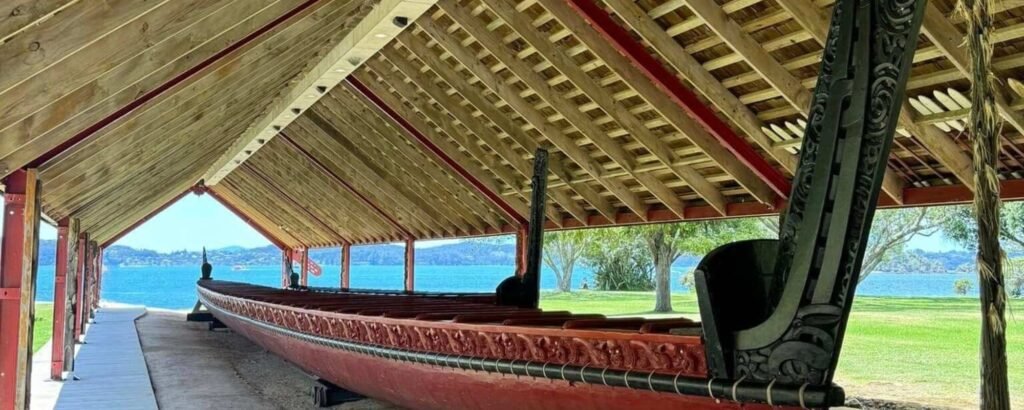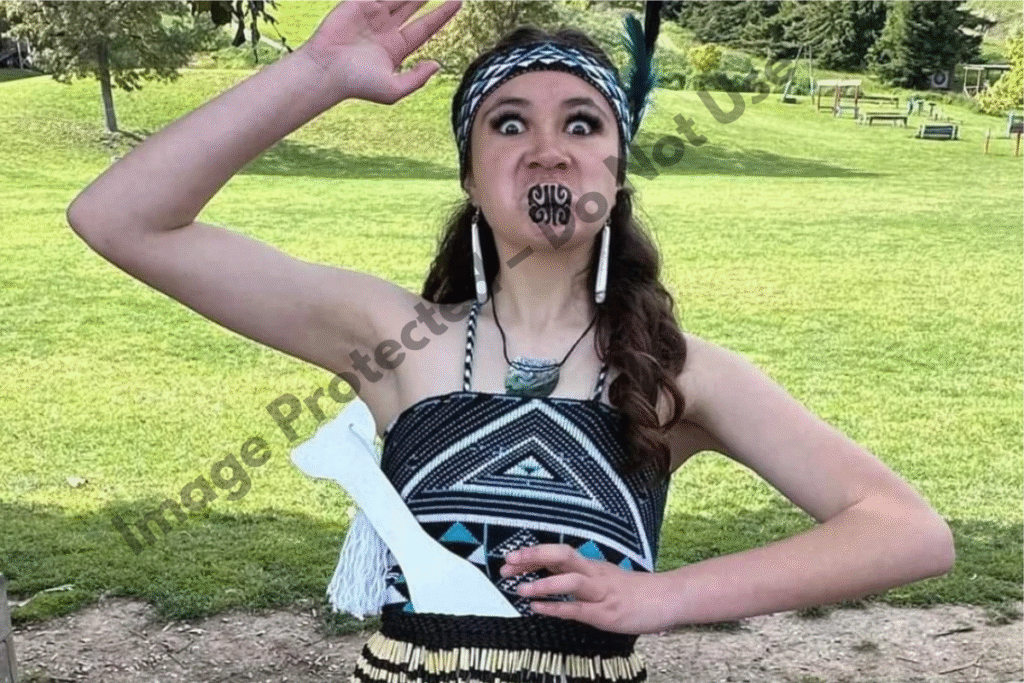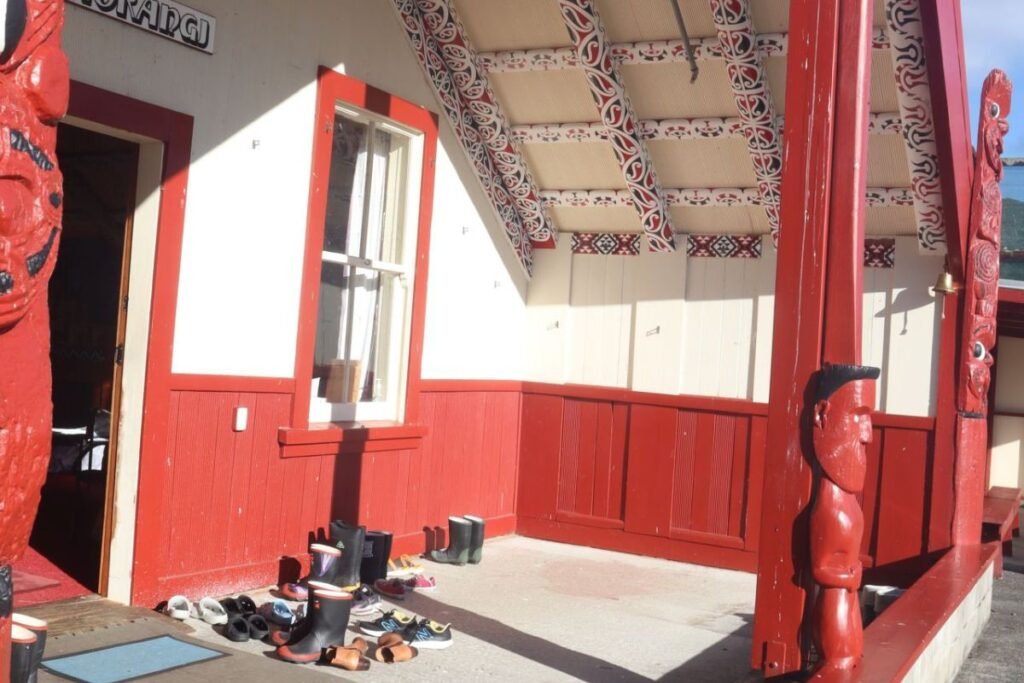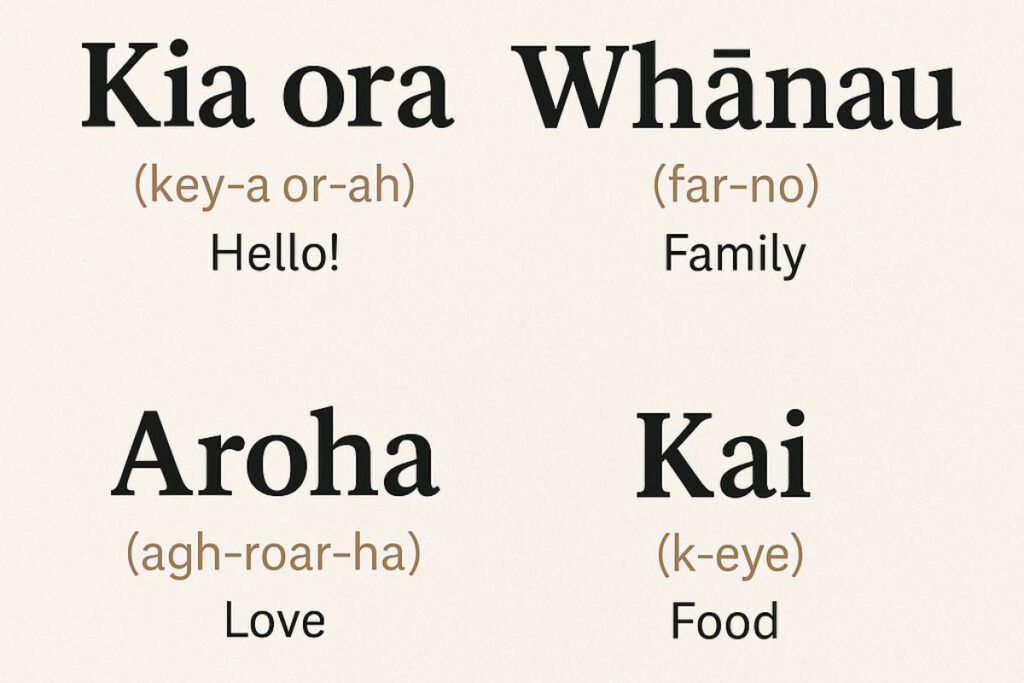
Understanding the customs and protocols of Māori culture is not just about showing respect — it’s about building genuine connections with the people and land of Aotearoa – New Zealand. Whether you’re visiting a marae (tribal meeting ground), taking part in a cultural experience, or simply exploring this beautiful country, being culturally aware can go a long way.
Below are some key cultural dos and don’ts to help you navigate your journey with understanding and respect..
Table of Contents
Entering a Marae

The marae is a deeply sacred place — not just a venue or community centre, but a connection to tūpuna (ancestors) and iwi identity.
✅ DO:
- Wait for an invitation or formal pōwhiri before entering.
- Follow the lead of your hosts — they’ll guide you through where to go and how to behave.
- Be respectful during ceremonies — turn your phone off and stay quiet during speeches.
❌ DON’T:
- Walk onto a marae uninvited — it’s not a public space you can just explore.
- Wander around taking photos unless you’ve been given permission.
- Interrupt the formal process, even if you’re unsure what’s happening — just stay still and observe.
Understanding Pūkana and Gender Roles

Pūkana (fierce facial expressions) are powerful expressions of wairua and mana — but they aren’t the same for men and women.
✅ DO:
- Understand that women express their pukana by widening their eyes and turning down the sides of the mouth.
- Appreciate the power and purpose of pukana in haka and other performance — it’s more than a facial expression.
❌ DON’T:
- Ask women to poke their tongues out — this is reserved for men and seen as disrespectful when misused.
- Treat pukana as a novelty or a photo opportunity.
Respect for Sacred Spaces and Objects
In te ao Māori, certain everyday objects and places are tapu (sacred) and must be treated with care.
✅ DO:
- Sit on chairs or the ground when in doubt.
- Treat dining areas and kitchen spaces as sacred — they are linked to kai and sustenance.
- Respect household customs when visiting Māori homes.
❌ DON’T:
- Sit on pillows — they are associated with the head, which is tapu.
- Sit on kitchen benches, dining tables, or coffee tables — these are spaces reserved for food, not for sitting.
- Place personal items like hats or underwear on tables or pillows — even temporarily.
Cultural Beliefs Around Menstruation
There are traditional beliefs around wāhine and the sea during menstruation, especially in culturally significant areas or ceremonies.
✅ DO:
- Ask if you’re unsure — different iwi may observe these customs differently.
- Be mindful when swimming near sacred waters or while participating in cultural events.
❌ DON’T:
- Swim in the sea while menstruating, especially during rituals or visits to places of significance.
- Brush this off as superstition — it’s part of a wider cultural framework of tapu and noa (sacred and ordinary).
Inside the Wharenui (Meeting House)
The wharenui isn’t just a building — it’s considered a living embodiment of ancestors.

✅ DO:
- Remove your shoes before entering.
- Remain quiet and respectful inside.
- Follow seating arrangements if advised — these are often based on gender and standing in the whānau or group.
❌ DON’T:
- Eat, drink, or act casually inside.
- Assume it’s okay to explore without guidance.
Body Language and Personal Boundaries
Māori beliefs around tapu extend to people’s bodies, particularly the head.
✅ DO:
- Be mindful of personal space, especially around elders or during formal settings.
- Offer gestures like a hongi (if led by your host) with reverence — it’s about sharing breath and life force.
❌ DON’T:
- Touch someone’s head — even a child’s — without permission.
- Treat hongi like a casual greeting or joke.
Speaking and Understanding Te Reo Māori
Using te reo Māori is a beautiful way to connect, but it must be done with respect.

✅ DO:
- Learn and use common greetings like kia ora or tēnā koe.
- Make an effort to pronounce place names correctly — even a small effort is appreciated.
- Check out our Guide to Māori Pronunciation to help you sound it out the right way.
❌ DON’T:
- Use te reo Māori in a mocking or joking way.
- Assume it’s okay to create your own translations or misuse terms — context matters.
Final Thoughts
Aotearoa – New Zealand is built on two cultures: Māori and Pākehā. When we travel, we don’t just move through places — we move through people’s histories, beliefs, and living traditions. Taking the time to understand Māori customs isn’t about ticking boxes — it’s about honouring the tangata whenua (people of the land) and walking respectfully in their world.
Ēhara te tono āwhina te haumate, he kaha kē
Asking for help is not a weakness, it is strength